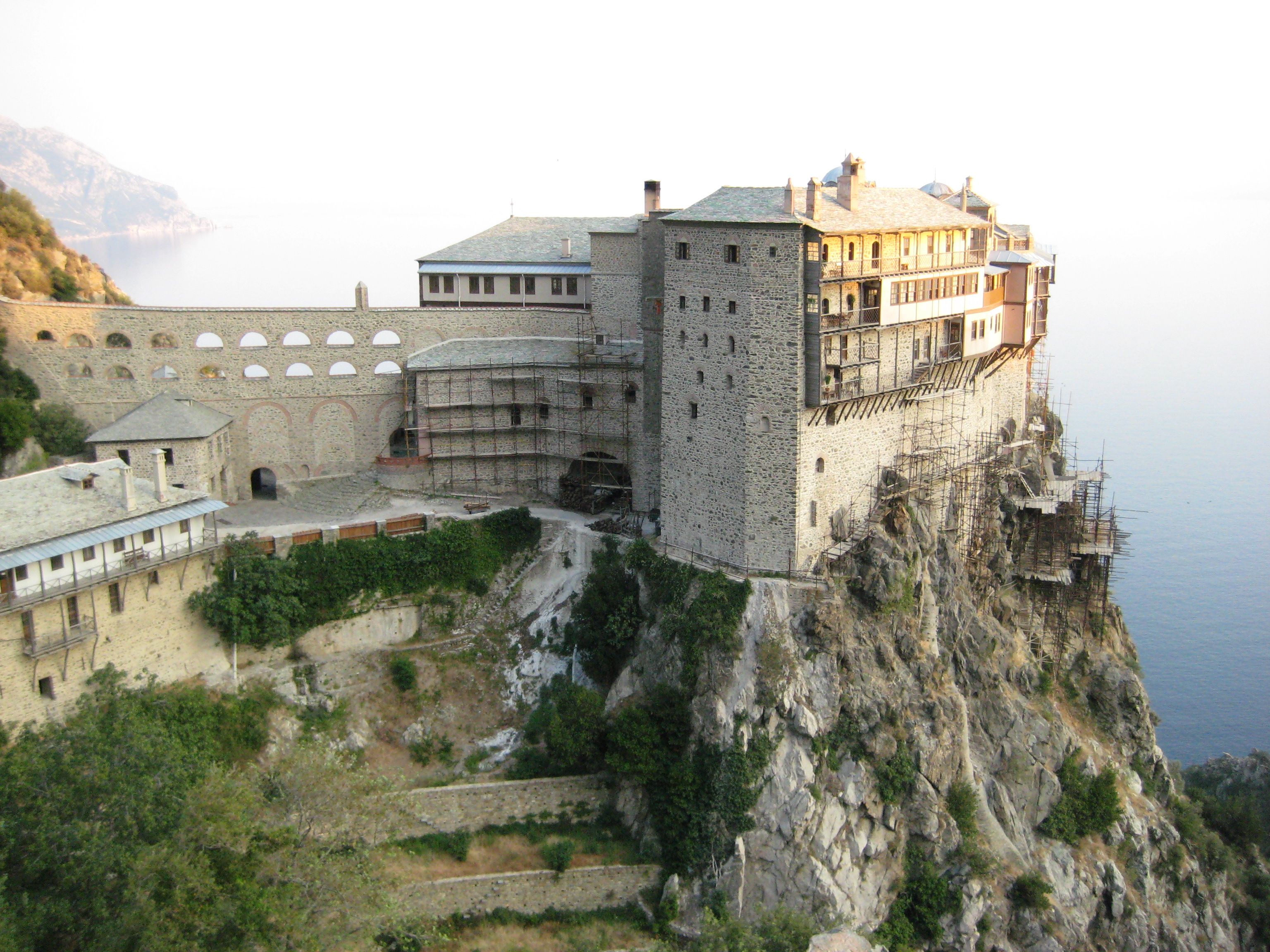Athos Peninsula
Athos peninsula is the easternmost third leg of Chalkidiki. To the east it has Siggitikos Gulf and to the west Ierissos Gulf. The main characteristic of the peninsula is the mountain by the same name, Mt Athos, which stands proudly at the end of the leg, having been described as the “stone spear guarding mysticism”.
Similarly to the rest of Chalkidiki, Athos peninsula stands out for its incomparable landscape, but it also has an intense cultural and religious character. It is divided into two parts; its northern part consists of small villages, towns and habitable islands and its central and southern parts make up Agion Oros, the Holy Mountain.
Exploring Athos peninsula.
On your way to the third leg of Halkidiki you will pass through a number of small picturesque villages. Clear blue waters, inlets, lush vegetation and the intense aroma of the trees are the elements that make Athos’ beauty stand out. It is the only area in Chalkidiki that combines an intense cosmopolitan character with a reverent atmosphere, radiating tranquillity and calmness from the autonomous monastic state of Mt Athos.
As you head to Ierissos, depending on the route you follow, you will come across Olympiada and then Stageira, the birthplace of Aristotle, one of the greatest philosophers of ancient Greece. While you are there you can visit the grove named after Aristotle and see his statue, as well as the instruments mentioned in his writings.
Continuing along you will reach Ierissos, which was known as Akanthos in antiquity. It is a seaside town with developed shipping and fishing industries. By the harbour you will get a taste of Ancient Akanthos, as parts of the ancient wall have been preserved. Next you will arrive Nea Roda, a quiet picturesque village that was a refugee settlement during the Asia Minor disaster. Historically it was the point from which king Xerxes started his canal during the Persian wars, in order to avoid circumnavigating the peninsula. As you continue towards Mt Athos you will encounter many quiet blue flag beaches where you can enjoy a dip. The final destination just before the border with Mt Athos, the last secular stop, is Koumitsa. Endless blue waters, thick sand, restaurants, organised accommodation and beach bars will provide you with a quiet holiday.
The western side of the island is more developed for tourism and more cosmopolitan. It attracts many who want to lay back during the summer and stare at the endless blue of Siggitikos Gulf. Ouranoupolis is the western border and where you will stay if you want to travel to Mt Athos. Furthermore, this is where you set off from in order to head to the only habitable islands in Halkidiki, Ammouliani and the Drenia islets, also known as Gaidouronisia. Ammouliani is an ideal destination for those who love crystal clear waters and picturesque inlets with a view of Mt Athos. They are a stone’s throw from Ouranoupolis and you can guarantee your privacy in this small turquoise heaven by visiting it on your own boat. The sunset and tranquility of the landscape will enchant you.
The central and southern part of the peninsula consists of the autonomous monastic state of Mt Athos, also known as “garden of the Virgin Mary”. It is an independently governed region with its own legislative framework and a landmark of Orthodox Christianity. Mt Athos has been a UNESCO World Cultural Heritage site since 1988, as it is an artistically valuable landscape and an international landmark of Orthodox Christian art. The region is dedicated to the Virgin Mary and for that reason women are not allowed access, due to the so-called “Abaton”. Men can get permission to stay in Mt Athos, while there are small boats that sail around the peninsula for a tour of the monasteries from the water. Women are allowed to participate in the excursions as the boats travel along the coastline of Mt Athos and do not dock at a harbour.

